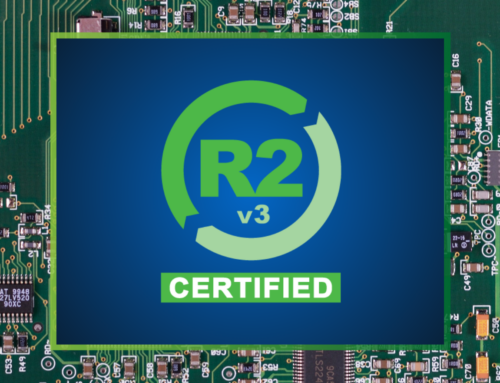If you work in IT or as a network manager there may come a time when you feel like you’re stuck in a rut, doing the same thing day-in and day-out, with no next rung on the ladder in sight. That’s when it’s time to take a good look at your current career trajectory and decide where you’d like to be in the future. Figuring out what you want and what steps you should to take, can help bring that next rung sharply into focus and help you revitalize a stagnating IT career.
Find out what you want
In a recent article on Fast Company (A 6 Step Plan to Figure Out Your Next Career Move), author, Gwen Moran offers advice from a variety of career coaches and other experts as well as six exercises to help you figure you out what you really want from your working life. These include picturing your ideal workday, paying attention to the things you dislike about the work you currently do, and focusing on small career segments–like just the next five years, as opposed to forever.
It’s important to pay attention to the things you enjoy and the things you don’t when planning your future and not to get caught up in a career path that may not be a good fit for your personality and temperament.
For example, if you have no interest in managing, leading or coaching other IT professionals, you probably shouldn’t put yourself on a management track, chasing that next raise or promotion. If you do, you’ll find yourself stuck on a career path worse than the stagnation you’re facing today, settling for something you’ll truly come to loathe.
Look instead for positions that fit your talents, values, and personality traits, where you can reap the rewards of your natural inclinations and that still offer opportunities for growth, as well as forward movement on your career path.
How to plot your course
Once you’ve gotten some clarity here, you can create a transition plan by looking for career tracks that best fit your current skill set, as you move towards gaining the skills and experience you need for your next career transitions, on your way to your ideal job. Remember to set clear, realistic, and attainable goals for each milestone along the way.
Whatever your plan or goals for your future, you’ll have to keep in mind the type of preparation necessary to get you to next steps, including at least some limited research and organizational skills.
You’ll need to find out what opportunities (in all different directions) exist from where you are right now and how those fit into, where you’d like to be in next year, in two years, and in five years. Your Supervisor or HR Department may even have guidelines or competencies established for particular career tracks within the company–getting your hands on these could save you a lot of research time
Once you have this information, you’ll need to create some lists and a timeline for reaching these goals.
Getting the skills (and experience) you need
Among your lists, there will also, undoubtedly be a list of gaps between the skill set you have and the next position you want. Assessing what skills are missing and acquiring those will be absolutely integral to jumpstarting your career. Which means, you’ll need to make some basic decisions about how you’ll acquire these skills (and the experience) to take your career to that next level.
Keep in mind that there is always more than one way to get the skills you need, so be sure to choose the way that best fits your learning style, goals and schedule.
These include:
- On the job learning or employer-provided training
- College or University study
- Self-study (books, webinars, online resources, etc.)
- Open-Source Projects or UseNet Development groups
- Volunteering for IT at a non-profit to build new skills
- Vendor certifications
- Vendor-neutral certifications (like Certified Ethical Hacker (CEH) and Certified Information
- Systems Security Professional (CISSP).
- IT security conferences
- Meetups and Hackathons
- One-on-one Mentoring
Making the right connections
We all know the old axiom, “It’s not what you know. It’s who you know.” While that’s not entirely true (who you know may give you an opportunity but you’ll still have to make something of it once you’re there), what is true is that if you have a great combination of what and who you know, you’ll reach your goals much sooner.
Know the company
Which is why the first stop after making your transition plan and deciding where and how you‘ll acquire the necessary skills, is to learn more about the company.
Whether it’s the company you currently work for or one you hope to work for one day, you need more than just your IT skills. You’ll need a well-rounded view of the business and industry this company lives in and the current company culture and infrastructure.
Knowing this can help make you a more valuable asset to the company, as you’ll have a unique insight into how to solve any IT challenges they may be facing and how best to help them innovate for the future.
Networking
Whether it’s within your current company or your industry at large or at a company or industry you’d one day like to work in, most plum positions are filled through professional networks, through the people we already know.
Get out there and make meaningful connections with people who can mentor or advise you, or even pass on information about upcoming positions within their industry or company. Check out conferences, events, developer meet-ups, and social media.
Just remember, your goal is to connect with trusted professionals. Certainly, do your homework and find out who the decision makers are but also check out how folks all connect to one another in the chain of command. Someone you’re chatting up who happens to be a lead or well-regarded member of the team may also have the ear of a key decision maker.
Make it your job to find real connection and to keep in touch. When opportunities present themselves, showcase your knowledge and drive for your career throughout the relationship and when you’re finally ready or a position comes open, signal them of your potential interest. You may just find that building strategic relationships while building your skill set, fast tracks you to the career of your dreams.






